This recipe yields a simple, rich Bolognese sauce that’s perfect over pasta or in Lasagna. It’s easy and straight-forward to make, it just needs a little time to simmer!

Let me preface this recipe by saying that I’m in no way, shape or form claiming this is the authentic, classic, traditional Ragu Bolognese recipe (just like my Marinara recipe). This is the way my husband has been making Pasta Bolognese for me for all of our marriage, and I love it his way. He is a trained chef, after all. And I’m not saying his sauce is objectively better than the original. It’s just my personal favorite.
It’s a very simple, unpretentious recipe. It yields a rich, flavorful sauce you can eat with pasta, in Lasagna, just by itself in a bowl with some ricotta to be eaten with a spoon…
Note: Quick Bolognese recipes
In case you aren’t looking for a slow simmered sauce but just want a quick pasta with meat sauce for dinner… I have some recipes for you:
Ingredients you’ll need
Here is a visual overview of the ingredients in the recipe. Scroll down to the printable recipe card at the bottom of this post for quantities!
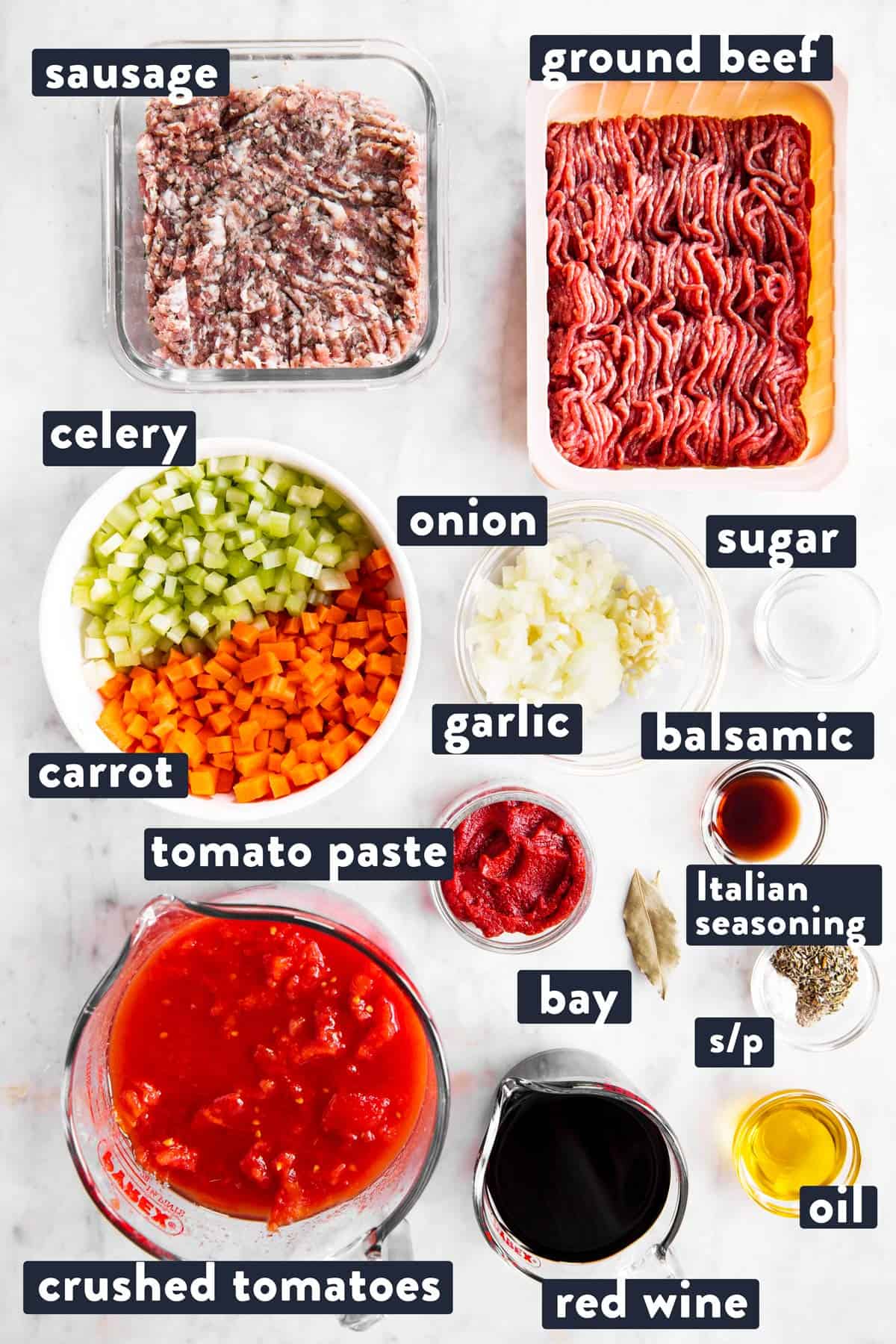
Ingredient notes
- Sausage: I love using Italian pork sausage in this recipe. Classic is 50/50 ground beef and ground pork, but the sausage does add even more flavor. Feel free to use ground pork in place of the sausage, or all ground beef.
- Crushed tomatoes: You can use whole canned tomatoes or diced tomatoes in place of the crushed. Each will yield a slightly different consistency, but they all work.
- Red wine: A Chianti is by many considered the best wine to make a Bolognese sauce (unless you swear by white wine in Bolognese – I like it both ways, but a little more with red; I guess because it’s what I grew up with. I know the original-original recipe calls for white wine. This is obviously not the original-original recipe.). But a Cabernet Sauvignon or Merlot also works great, although you probably wouldn’t find something with a French name in Nonna’s Bolognese.
- Sugar: This is an ingredient you really only need for cheaper canned tomatoes. Very high quality canned tomatoes, or home-canned from the garden, are sweet enough and do not need the sugar. But a few pinches of sugar really can take a sauce made from cheaper canned tomatoes from good to great.
- Balsamic vinegar: This is not a traditional ingredient in a Bolognese, but I find it adds a nice touch of flavor to the sauce.
- No milk? I also know the original-original recipe calls for milk, but I don’t add it. I have done a lot of research on this topic because I really wanted to like Bolognese with this authentic ingredient. But the milk in there just doesn’t agree with me. Also, if you don’t add the milk the right way, it easily curdles in the acid from the tomatoes and the wine, so it isn’t as simple as I wanted this recipe to be. Finally, in my research I have found many voices that claim the milk was originally added to the recipe in order to make lower quality meat more supple/to add more fat. If you stick to using half pork sausage and try to reach for higher quality meat, you don’t really need to worry about this in my humble opinion. If you want to add dairy for richness/creaminess, I really enjoy some ricotta or mascarpone stirred into the sauce in the end, or just serve it with a lot of Parmesan.
How to make Bolognese Sauce
1. Start by sautéing the onion, garlic, carrot and celery in olive oil until the onion has fully softened. This will take 5-10 minutes over medium heat, and it’s important you take your time with this step. Otherwise, you’ll have lingering raw onion taste in your sauce later.
2. Next, add the beef and sausage and cook until browned. Crumble the meat as it cooks.
Then, stir in the seasoning and the tomato paste until fully incorporated. Allow the tomato paste to cook and roast for 1-2 minutes, this will significantly improve the flavor of the tomato paste.
sauté vegetables brown beef & season deglaze with wine add remaining ingredients
3. Next, pour in the red wine, stirring well to remove any browned bits off the bottom of the pan (this is called deglazing). Simmer to reduce the wine by about ⅓. This will again take 3-5 minutes.
4. Finally, stir in the remaining ingredients. Bring to a boil once, then cover with a lid and simmer slowly for 1-2 hours. Take off the lid and simmer uncovered for another 15-30 minutes, until the sauce is rich and thick.
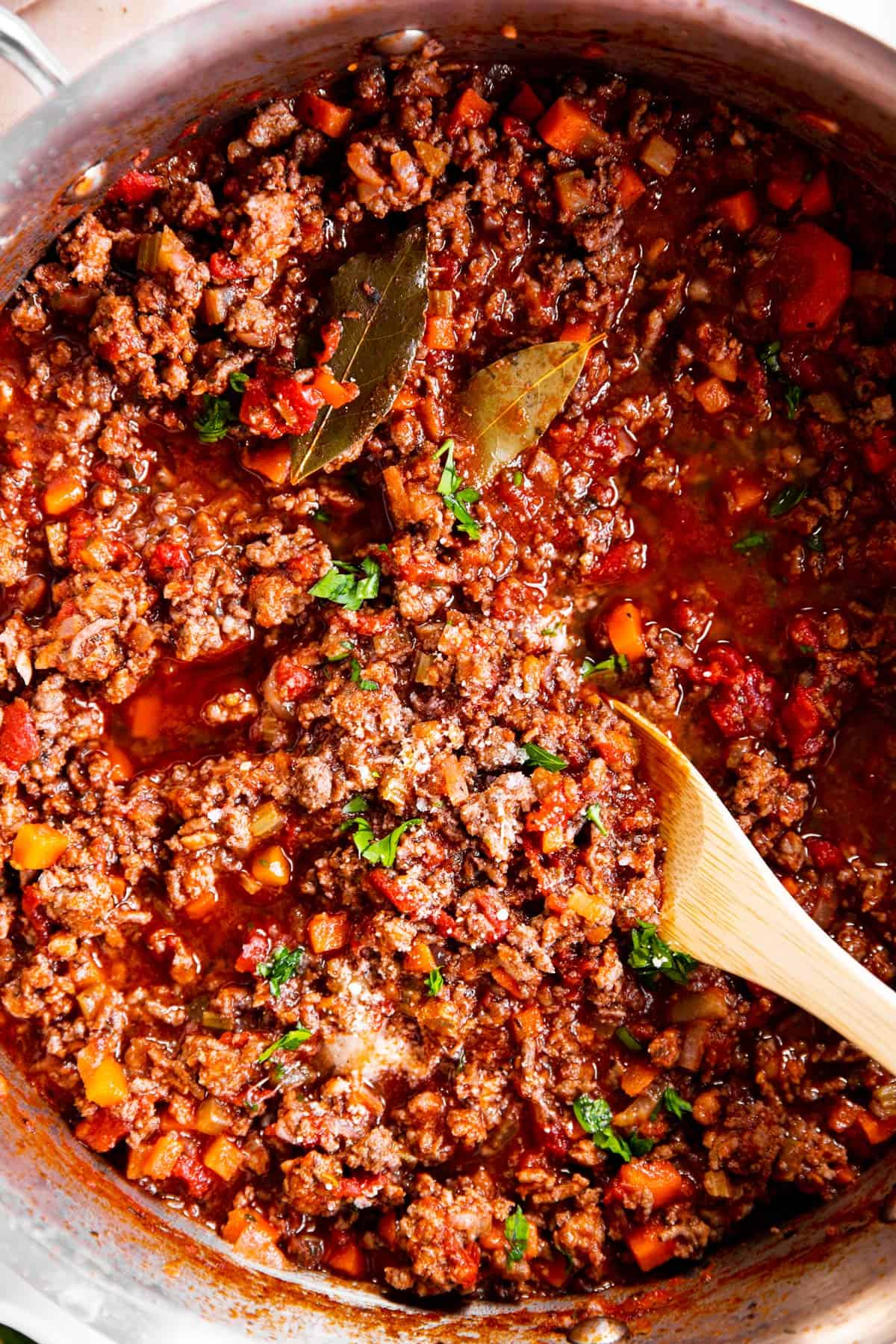
Recipe tips
- If you don’t want to bother with chopping the vegetables, throw them in a food processor with the blade attachment and pules a few times until they are finely chopped. Super fast and super easy! That’s what we did when we made this recipe for 60 people at an event and it works just as well for a single batch.
- Make sure to fully cook and soften the onion in the first step of the recipe. Otherwise, the raw taste will linger in the finished sauce.
- Likewise, take your time when browning the meat and when adding the tomato paste to roast. Doing these steps thoroughly will ensure a very flavorful, rich sauce.
- We often simmer the sauce for just 20-30 minutes on weeknights, but the flavor when simmering it for 2 hours is definitely a lot more intense.
Storage tips
Fridge: Allow the sauce to cool to room temperature, then pack it into an airtight container and store in the fridge for up to 3 days.
Reheat in a pot on the stove until steaming hot all the way through with a little beef broth added.
Freezer: Allow the sauce to cool to room temperature, then pack it into freezer-friendy bags or containers. Label with the name and use-by date (freeze for up to 3 months), then place into your freezer.
Defrost in the fridge overnight, then reheat on the stove until steaming hot all the way through. You may need to add a little beef broth, but chances are there is some condensation from the freezing/defrosting and you may not need any extra liquid.
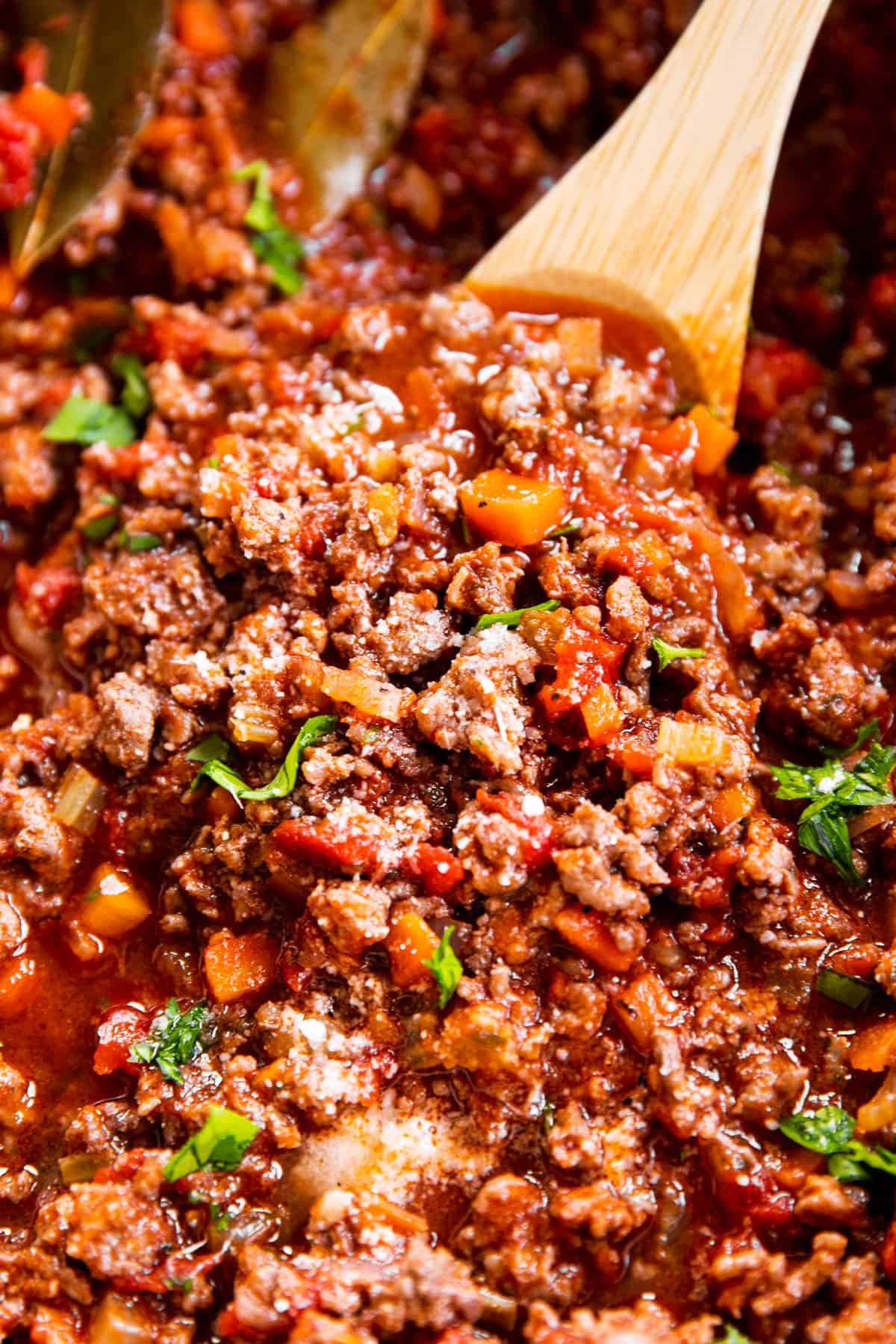
Serving ideas
We eat this sauce in so many ways! It’s obviously great over pasta (try it with a wider pasta and not with spaghetti – spaghetti definitely needs a more “saucy” sauce, and this is more like a thick, meaty Ragu).
But it also works with polenta or without any carbs at all. I often have a bowl with a spoonful of ricotta and some parmesan cheese added.
We also use this recipe in our family-favorite lasagna.
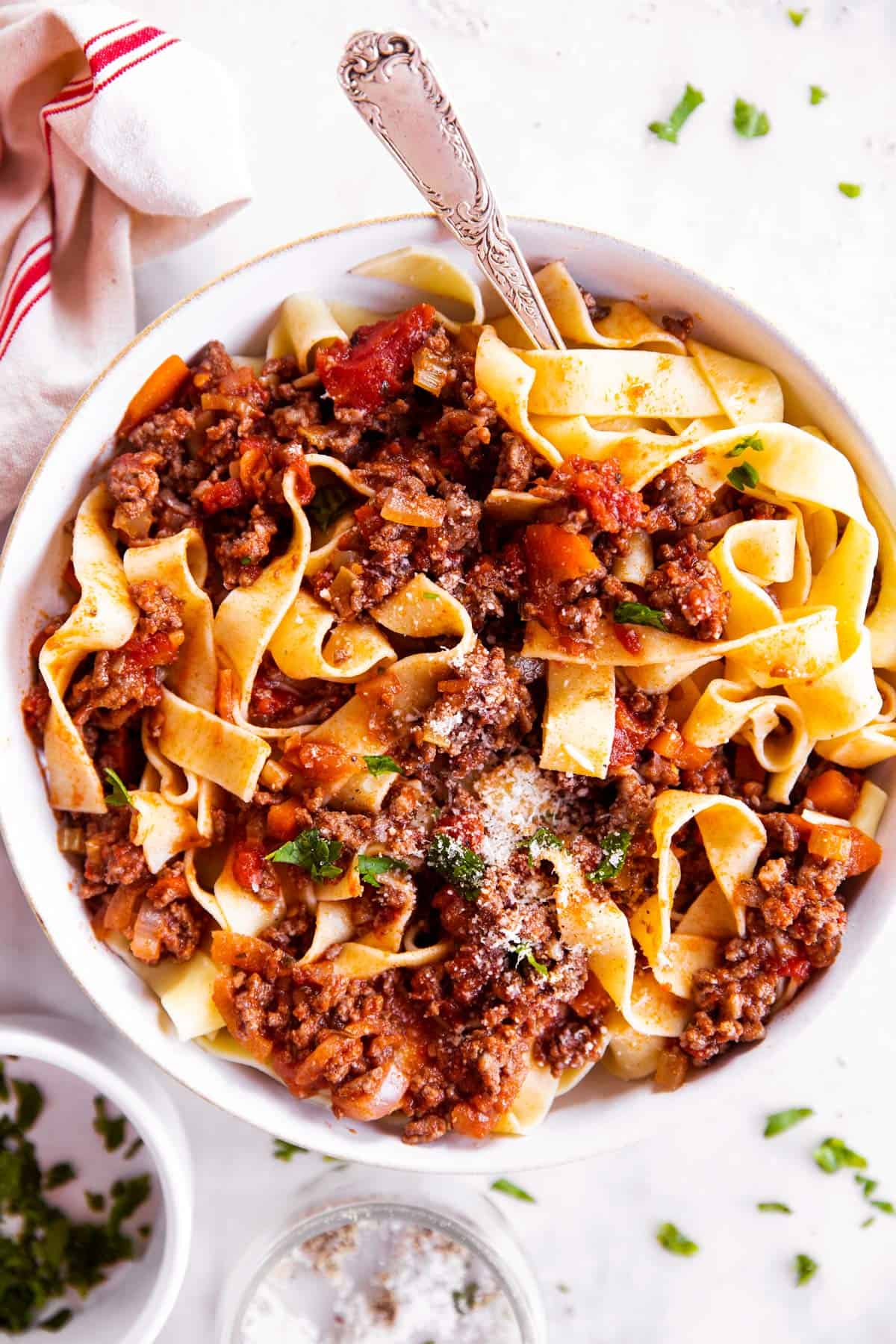
PS If you try this recipe, please leave a review in the comment section and add a star rating in the recipe card – I appreciate your feedback! Follow along on Pinterest, Facebook or Instagram.
Printable recipe
Simple Bolognese Sauce
Recipe details
Ingredients
- 2 tablespoons olive oil
- 1 onion finely chopped
- 2 medium carrots finely diced
- 2 sticks celery finely diced
- 3 cloves garlic minced
- 1 pound ground beef
- 1 pound ground Italian sausage or sausages with casings removed
- ¼ cup tomato paste
- 2 teaspoons Italian seasoning
- 1 cup red wine
- 1 (28-oz) can crushed tomatoes
- 2 bay leaves
- 2 teaspoons balsamic vinegar
- 1 teaspoon sugar as needed
- salt and pepper to taste
Instructions
- Heat olive oil in a large, wide pan over medium heat. Add onion, carrot, celery and garlic and sauté slowly until onion has fully softened, about 8-10 minutes.
- Add ground beef and sausage and brown over medium-high heat, breaking up meat as it cooks.
- Stir in tomato paste, Italian seasoning, salt and pepper. Cook for 1-2 minutes, until tomato paste has roasted and smells flavorful (do not burn!).
- Pour in red wine, scraping any browned bits off the bottom of the pan. Simmer until wine has reduced by ⅓ (do not simmer any longer, or wine may become too acidic).
- Stir in crushed tomatoes and balsamic vinegar, add bay leaves. Bring to a boil once, then reduce heat to a simmer and cover with a lid.
- Simmer sauce covered for 1-2 hours, then remove lid and simmer for 15 more minutes, until rich and thick. Season with sugar, salt and pepper to taste. Discard bay leaves before serving.
Notes
Ingredient notes
- Sausage: I love using Italian pork sausage in this recipe. Classic is 50/50 ground beef and ground pork, but the sausage does add even more flavor. Feel free to use ground pork in place of the sausage, or all ground beef.
- Crushed tomatoes: You can use whole canned tomatoes or diced tomatoes in place of the crushed. Each will yield a slightly different consistency, but they all work.
- Red wine: A Chianti is by many considered the best wine to make a Bolognese sauce (unless you swear by white wine in Bolognese – I like it both ways, but a little more with red; I guess because it’s what I grew up with. I know the original-original recipe calls for white wine. This is obviously not the original-original recipe.). But a Cabernet Sauvignon or Merlot also works great, although you probably wouldn’t find something with a French name in Nonna’s Bolognese.
- Sugar: This is an ingredient you really only need for cheaper canned tomatoes. Very high quality canned tomatoes, or home-canned from the garden, are sweet enough and do not need the sugar. But a few pinches of sugar really can take a sauce made from cheaper canned tomatoes from good to great.
- Balsamic vinegar: This is not a traditional ingredient in a Bolognese, but I find it adds a nice touch of flavor to the sauce.
- No milk? I also know the original-original recipe calls for milk, but I don’t add it. I have done a lot of research on this topic because I really wanted to like Bolognese with this authentic ingredient. But the milk in there just doesn’t agree with me. Also, if you don’t add the milk in the right way, it easily curdles in the acid from the tomatoes and the wine, so it isn’t as simple as I wanted this recipe to be. Finally, in my research I have found many voices that claim the milk was originally added to the recipe in order to make lower quality meat more supple/to add more fat. If you stick to using half pork sausage and try to reach for higher quality meat, you don’t need to worry about this in my humble opinion. If you want to add dairy for richness/creaminess, I really enjoy some ricotta or mascarpone stirred into the sauce in the end, or just serve it with a lot of Parmesan.
Recipe tips
- If you don’t want to bother with chopping the vegetables, throw them in a food processor with the blade attachment and pules a few times until they are finely chopped. Super fast and super easy! That’s what we did when we made this recipe for 60 people at an event and it works just as well for a single batch.
- Make sure to fully cook and soften the onion in the first step of the recipe. Otherwise, the raw taste will linger in the finished sauce.
- Likewise, take your time when browning the meat and when adding the tomato paste to roast. Doing these steps thoroughly will ensure a very flavorful, rich sauce.
- We often simmer the sauce for just 20-30 minutes on weeknights, but the flavor when simmering it for 2 hours is definitely a lot more intense.



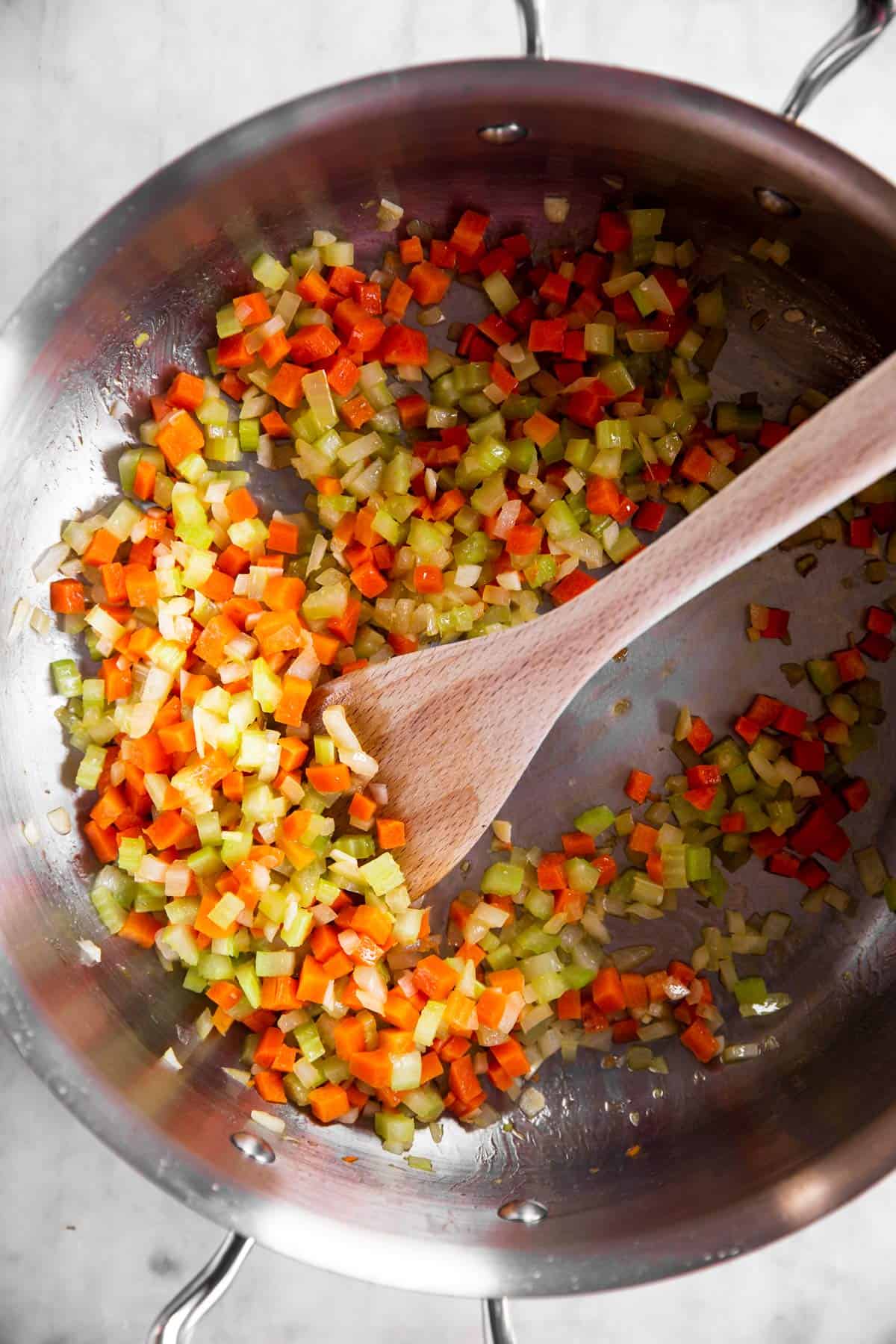
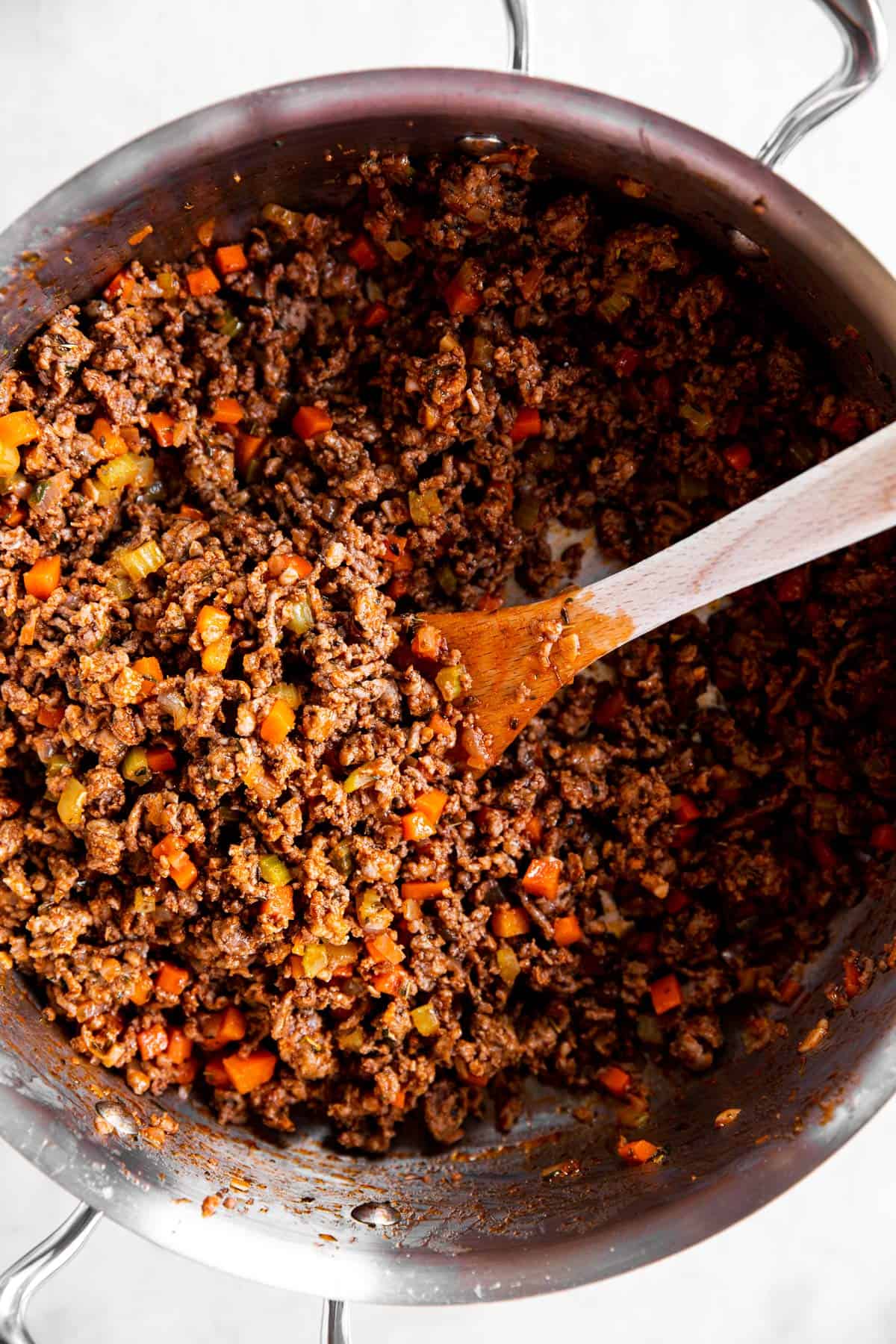
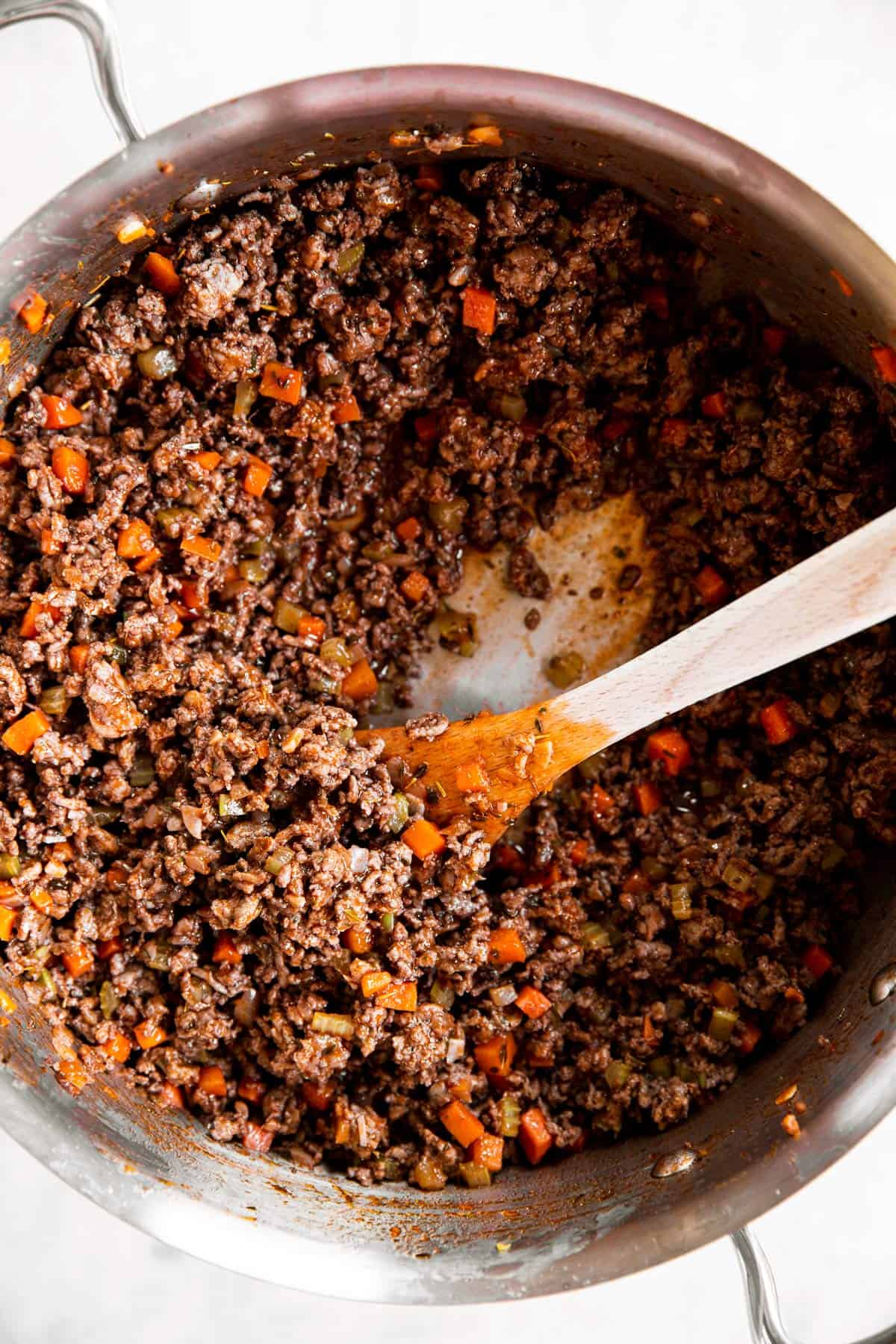
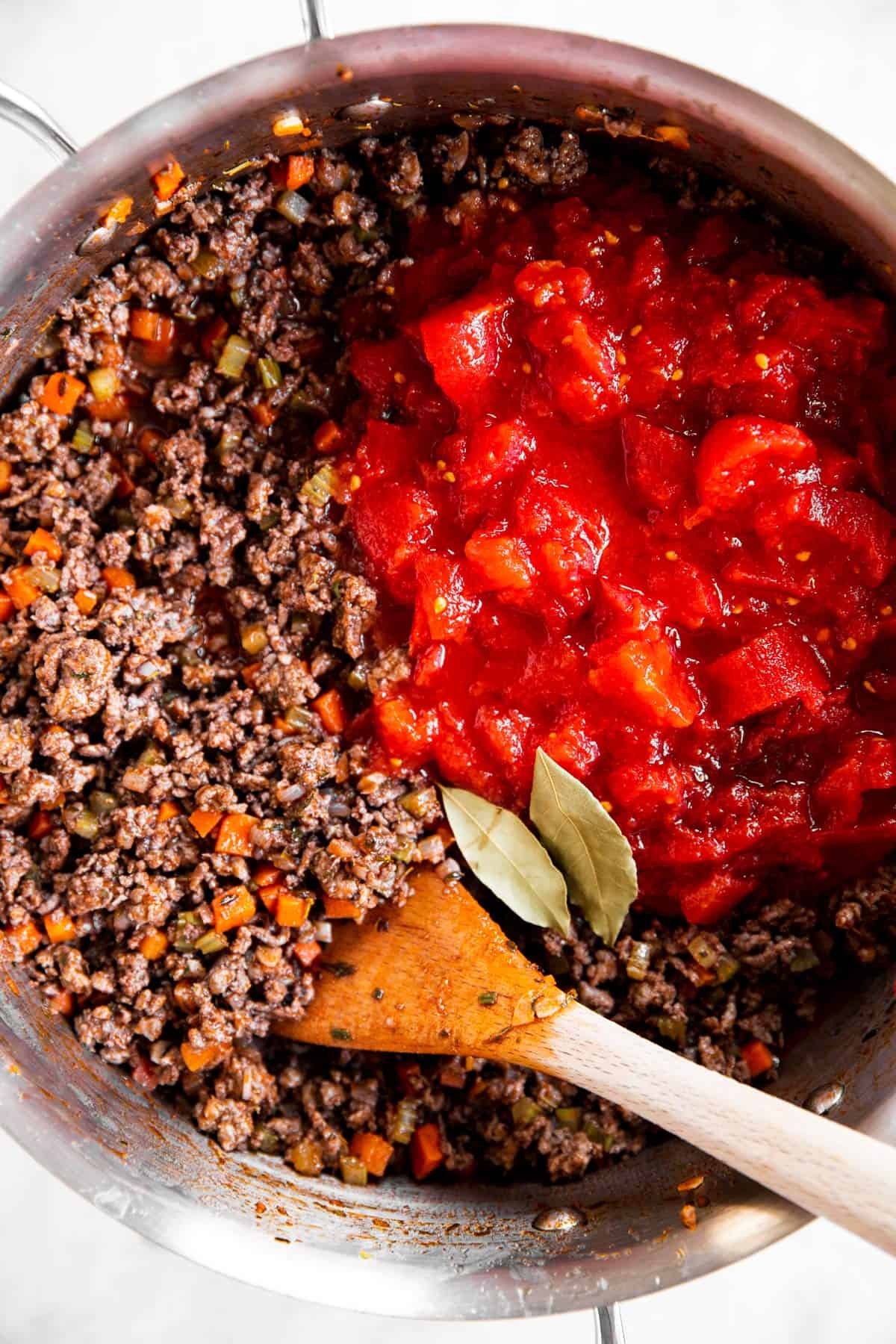
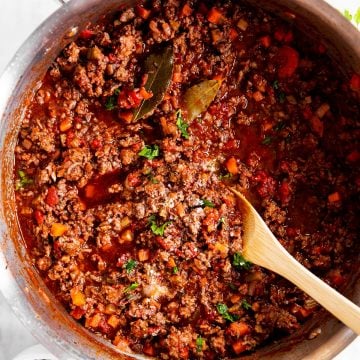
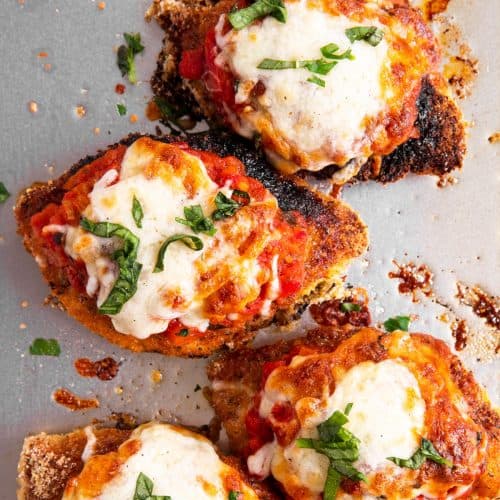
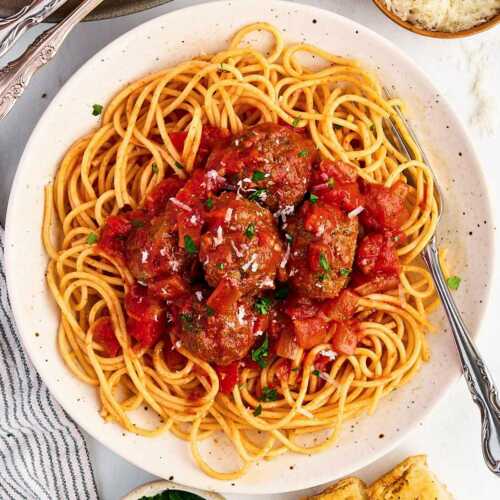
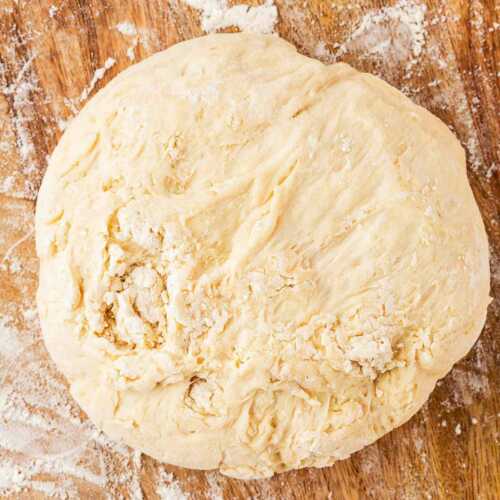
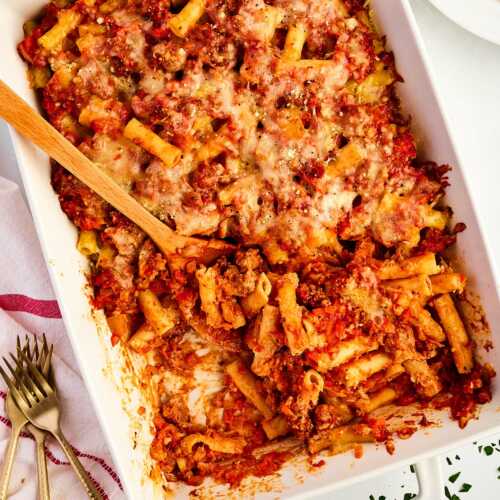



Rosie says
Sheeesh!! This turned out SO GOOD! Followed the recipe to a T and what a spectacular result! Thank you for this amazing recipe! I’ll never need another recipe for Bolognese because this is truly exquisite! ♥︎
Barbara says
Absolutely delicious. I didn’t change a thing.
Emelbee says
A family favourite. This makes a thick rich gravy for any pasta. Make sure you cook on low and allow to simmer at least two hours. Serve with bread and salad.
Anne says
A real saver when you want to go through the basics of this famous sauce! I cooked it for my husband and he really liked it!
Nora says
So glad to hear it, Anne!
Cathy Leard says
This was truly the best delicious recipe for lasagna. The sauces are off the chain!! Delicious!! I just purchased a food sealer because of this recipe. Making the bolognese sauce this weekend to use with other dishes. Absolutely love this!!!
Barbara says
The best bolognese recipe! Substituted with ground turkey and still turned out so delicious!